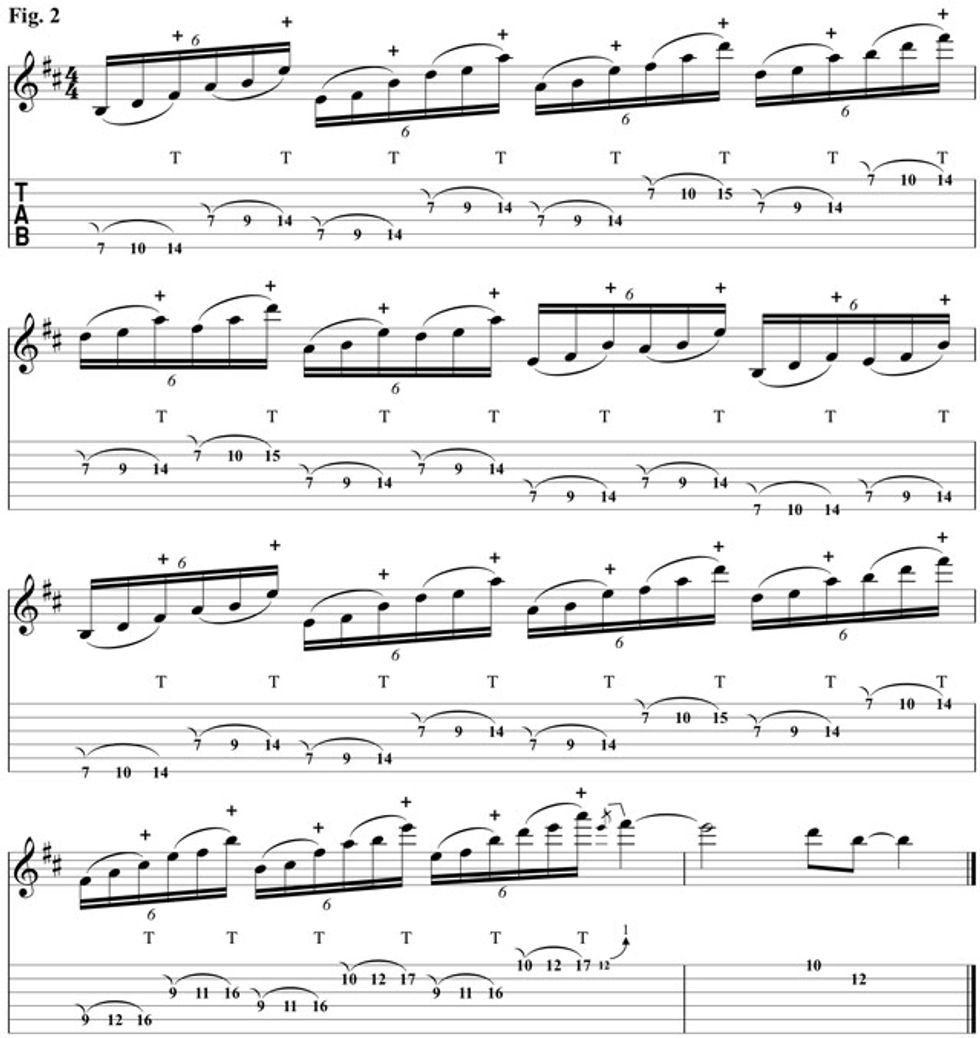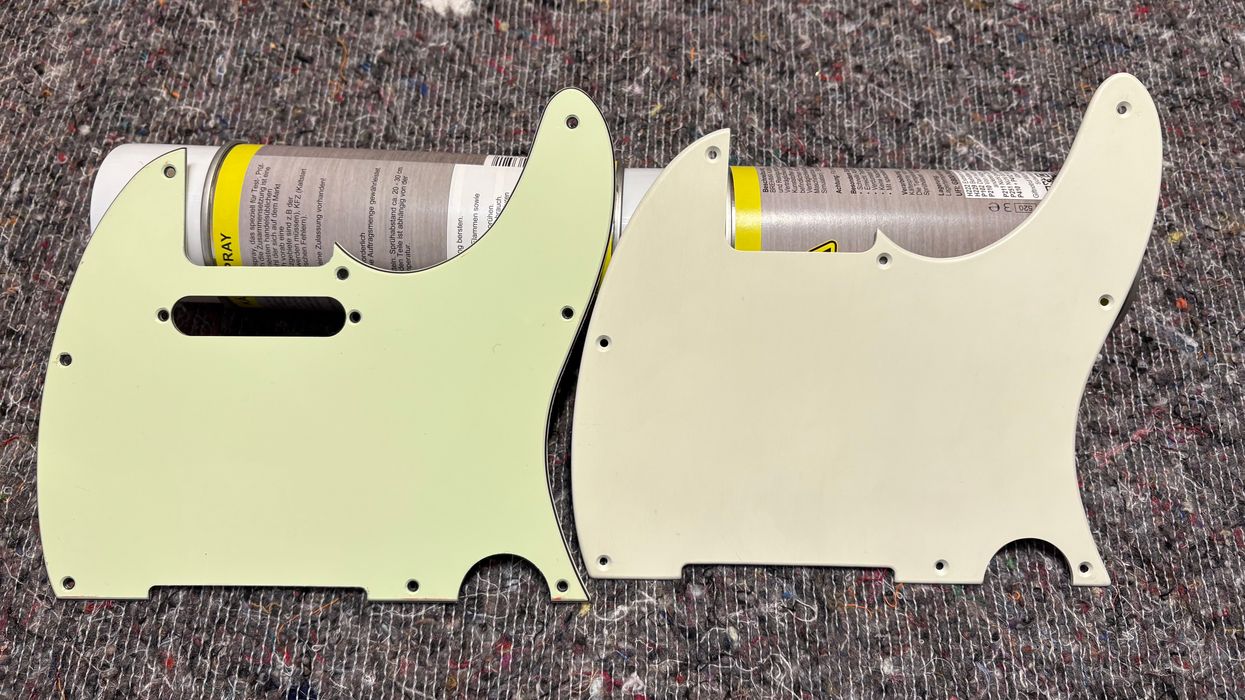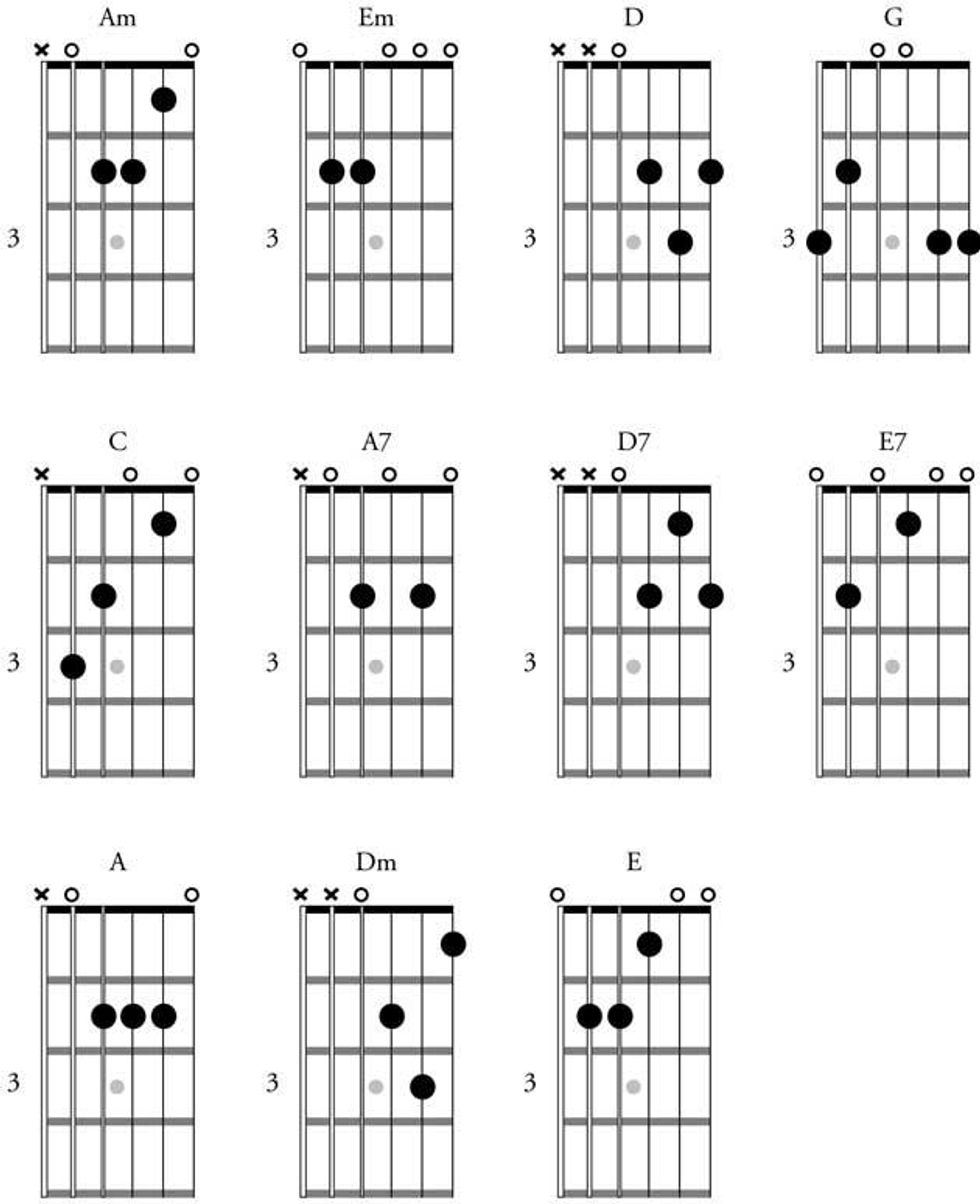Chops: Intermediate
Theory: Intermediate
Lesson Overview:
• Understand the basics of left- and right-hand tapping.
• Combine pentatonic scales to create more harmonically interesting phrases.
• Develop dexterity with multi-finger right-hand tapping.
Click here to download a printable PDF of this lesson's notation.
If you are into all things rock, it would be hard to dig into the history of this genre without understanding the “how” and “why” of tapping. From Eddie Van Halen—who really popularized the technique—and Ritchie Blackmore to more modern masters like Steve Vai and Joe Satriani, tapping has earned a place that is near and dear to every shredder’s heart. In this lesson we will look at three killer licks that combine left- and right-hand tapping, legato techniques, and some sweep picking. Let’s get started!
Our first example (Fig. 1) is a very Jason Becker-inspired lick. We stay pretty much in the key of E natural minor (E–F#–G–A–B–C#–D) and start with a series of descending diatonic triads. Don’t worry: There is some tapping involved, as well as some legato stuff at the end of the phrase, so you can shred in style. The progression goes Em–D–C–Bm before I move into a larger sweeping arpeggio for the Am. I’m sweeping all the way down to the 5th string and then after sweeping back up, I tap the root with my middle finger on the 1st string.

I use a similar technique for the G major arpeggio that follows before I move into some tapped sextuplets that descend down to a low B on the 6th string. When I start to ascend I use a trick I picked up from Greg Howe. I hammer-on “from nowhere” with my left hand to start each group of three notes on each string. I recommend you take your time with this one and play it slowly. It’s easy to start out trying to play fast, but you want to make sure you are hitting all the notes as cleanly as possible.
The lick in Fig. 2 is an exercise I use to build up strength in the middle and ring fingers on my right hand. Don’t let the word “exercise” fool you, because it does make for a great lick and also creates ways for you to move through more than one pattern. Essentially, I am playing a standard B minor pentatonic (B–D–E–F#–A) shape with my left hand—again with hammer-ons “from nowhere”—and tapping the notes of a Bm7 with my right hand. This lick really gets your string skipping together and makes a good “looping” lick. Just repeat the first two measures to build up your stamina. You can mess around with the same shapes in different positions, or you can also keep the right hand the same and move your left hand into the next pentatonic position. This will give you lots of mileage out of one lick.

I have to say monkey tricks are my favorite kind of licks, so I am going to stay on the path of the pentatonic tapping. Why? Because pentatonics are awesome and whether people know it or not, they love it. The lick in Fig. 3 uses a similar sequence to one of the previous examples but this time it’s a bit more involved with the note choices. I would use this over an A7 chord in any kind of bluesy-rock jam. Basically, I am playing A minor pentatonic (A–C–D–E–G) with my left hand and F#m pentatonic (F#–A–B–C#–E) with my right. This gives you the 9th and the 13th, which is a bit of added color as opposed to just playing a typical minor pentatonic scale.

I suggest you play it slow because you are playing two different patterns at once. After you master it in this key, move it to the next position in this key and see how it goes. Then transpose the phrase to another key of your choice. It is always good to know all your licks in every key—it just makes you that much better.
 Since graduating from Musician's Institute in 2004, Justin Derrico has toured with artists such as The Calling and Robin Thicke, and also performed with Tina Turner and Beyonce at the Grammys. He is currently touring with Pink as well as playing in the house band for NBC's hit show, The Voice. For more information, visit justinderrico.com.
Since graduating from Musician's Institute in 2004, Justin Derrico has toured with artists such as The Calling and Robin Thicke, and also performed with Tina Turner and Beyonce at the Grammys. He is currently touring with Pink as well as playing in the house band for NBC's hit show, The Voice. For more information, visit justinderrico.com.
















